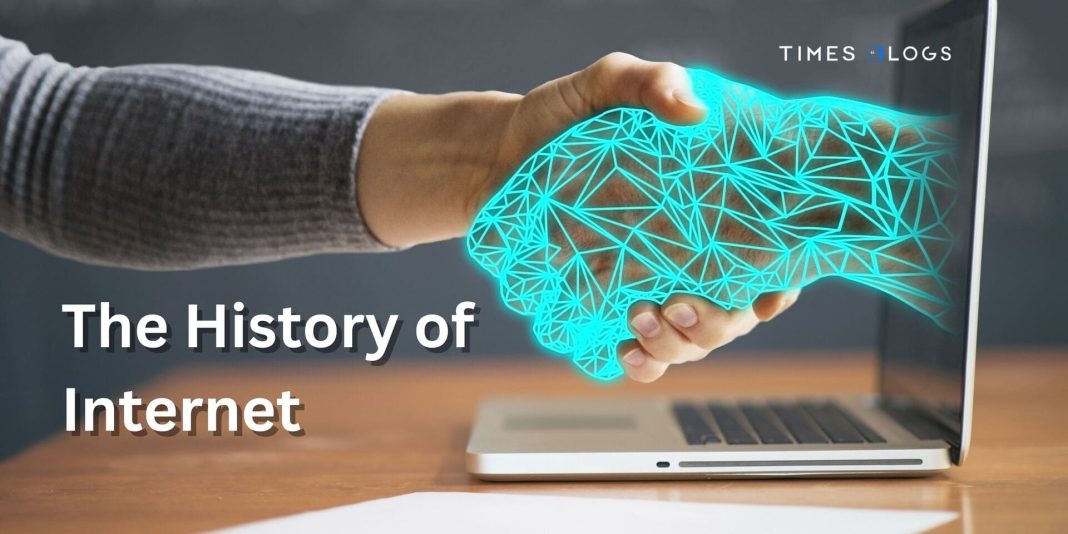The internet has become an integral part of our daily lives, connecting people from all corners of the world and enabling instant communication, access to information, and online shopping. It’s hard to imagine a world without the internet, but it hasn’t always been this way. The internet has a rich history that dates back to the 1960s, and it has undergone many transformations over the years.
In this blog post, we will take a closer look at the history of the internet, from its early days as ARPANET to the birth of the World Wide Web.
ARPANET: The Birth of the Internet
The origins of the internet can be traced back to the 1960s, when the US Department of Defense’s Advanced Research Projects Agency (ARPA) established a research project to create a network of computers that could communicate with one another. The project was known as ARPANET, and it was designed to allow researchers to share resources and communicate with one another more easily.
ARPANET’s first connection was established in October 1969 between the University of California, Los Angeles (UCLA) and the Stanford Research Institute (SRI). The first message sent across the network was the word “LOGIN,” which was typed on a computer at UCLA and received at SRI.
Over the next few years, ARPANET continued to grow, connecting more and more computers across the United States. By the mid-1970s, the network had expanded to include more than 60 universities and research institutions.
TCP/IP: The Foundation of the Internet
In the early days of ARPANET, communication between computers was based on a set of protocols known as the Network Control Program (NCP). However, as the network grew, it became clear that NCP was not sufficient for the demands of a large-scale network.
In 1974, a team of researchers led by Vint Cerf and Bob Kahn developed a new set of protocols that would become the foundation of the modern internet. The protocols, known as Transmission Control Protocol/Internet Protocol (TCP/IP), were designed to allow data to be transmitted reliably over a network of interconnected computers.
TCP/IP was adopted as the standard protocol for ARPANET in 1983, and it remains the backbone of the internet to this day. Without TCP/IP, the internet as we know it would not exist.
Email and Usenet: The Birth of Online Communication
In the early days of ARPANET, communication between researchers was limited to simple messages sent through the network. However, as the network grew, researchers began to develop more sophisticated tools for communication.
One of the earliest forms of online communication was email, which was developed in the early 1970s. The first email message was sent by computer engineer Ray Tomlinson in 1971, and it simply read “QWERTYUIOP.”
In addition to email, another early form of online communication was Usenet, a system of discussion forums that allowed users to post and read messages on a variety of topics. Usenet was developed in 1979 by two Duke University graduate students, Tom Truscott and Jim Ellis, and it quickly became a popular way for researchers to share information and ideas.
The Birth of the World Wide Web
While ARPANET and other early networks laid the groundwork for the modern internet, it was the development of the World Wide Web in the 1990s that truly revolutionized the way we use the internet today.
The World Wide Web was developed in 1989 by British computer scientist Tim Berners-Lee, who was working at CERN, the European physics research center. Berners-Lee’s goal was to create a system that would allow scientists to share information more easily across the internet.
The first website was launched in 1991 by Berners-Lee, and it contained information about the World Wide Web project itself. The website was basic by today’s standards, consisting of simple text and hyperlinks to other pages.
However, the World Wide Web quickly gained popularity, and by the mid-1990s, it had become the dominant way of accessing information on the internet. The ability to create and share web pages easily and cheaply made the internet accessible to a wider audience, and it opened up new possibilities for commerce, education, and communication.
The Rise of E-Commerce and Social Media
In the early days of the World Wide Web, most websites were static and served primarily as sources of information. However, as the web evolved, so did the types of websites that were created.
One of the most significant developments was the rise of e-commerce, which enabled businesses to sell products and services directly to consumers over the internet. Amazon, which was founded in 1994, was one of the first major e-commerce websites, and it paved the way for the online shopping revolution that followed.
Another significant development was the rise of social media, which enabled users to connect and share information with one another on a massive scale. The first social networking site, Six Degrees, was launched in 1997, and it allowed users to create profiles and connect with other users.
However, it was the launch of Facebook in 2004 that truly revolutionized the way we use social media. Facebook quickly became the dominant social networking site, and it spawned a whole host of imitators and competitors.
The Future of the Internet
The internet has come a long way since its early days as ARPANET, and it continues to evolve at a rapid pace. Today, the internet is a vast and complex network that connects billions of people around the world.
One of the most significant trends in recent years has been the rise of mobile internet access. As smartphones and other mobile devices have become more powerful and more affordable, an increasing number of people are accessing the internet on the go. This has opened up new possibilities for e-commerce, social media, and online entertainment.
Another significant trend is the rise of artificial intelligence (AI) and machine learning. As computers become more powerful and more sophisticated, they are able to perform tasks that were once thought to be the exclusive domain of humans. This has implications for everything from healthcare to education to entertainment.
Conclusion
The history of the internet is a fascinating story that highlights the ingenuity and creativity of human beings. From the early days of ARPANET to the birth of the World Wide Web, the internet has undergone many transformations over the years.
Today, the internet is a vital part of our daily lives, enabling us to connect with one another, access information, and conduct business from anywhere in the world. As the internet continues to evolve, it will undoubtedly bring new opportunities and challenges, and it will be up to us to navigate this brave new world with skill and ingenuity.




